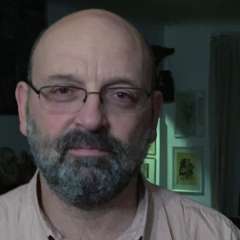A series of concerts reuniting Evgeny Kissin and the Emerson String Quartet proved once more that arranged musical “marriages” can be very successful if properly thought through by savvy impresarios. During the Friday night’s performance in the Stern Auditorium at Carnegie Hall, the musicians seemed to easily understand each other’s intentions. There was a palpable sense of communion floating around a stage full of recording devices. This novel experience should be beneficial for all involved. A formidable pianist, with a flawless technique, Evgeny Kissin is not known for too many excursions in the chamber music realm. It’s a world that he should explore more. Hopefully, his collaboration with the Emerson Quartet will help tame a bit his often-apparent Apollonian inflexibility. On the other side, during their four-decade career, the Emersons have invited many remarkable instrumentalists to join them in discovering jewels of the chamber music repertoire beyond the string quartets. Nevertheless, any opportunity to investigate new or rarely played scores, especially those where the members of the ensemble function as a string trio, can only help the foursome achieve new goals.
The program, the same during the entire series, was a well-rounded one. It started with Mozart’s Piano Quartet in G minor, the first major work employing the combined voices of violin, viola, cello and piano. The initial statement of the so-called “fate motif” was muscular, announcing a performance whose main trait was clarity, not the probing of inner fragilities. There were magnificent moments such as Kissin playing the melody leading into the Allegro’s development section with all the charisma of a great Chopin interpreter, or the rendering of the audacious harmonies that mark the piano-strings dialogue in the Rondo. At the same time, the sound balance was quite often tipped in favor of the piano’s clarion voice that dominated the elegant, withdrawn strings led by Philip Setzer’s violin.
Eugene Drucker, the other founding member of the Emerson Quartet, was the violinist in Fauré’s Piano Quartet no. 1. Listening to this interpretation, it was difficult to understand why Marcel Proust claimed to be “intoxicated by” his friend’s music. It was a clean, straight reading mostly lacking mystery. Different sounds blended well in this rendition of a music on the cusp between late Romantic, Brahmsian sonorities and more modern, dissonant ones. The piano playing in the Scherzo had an appropriate, feathery touch. Cellist Paul Watkins beautifully presented the upward swelling melody at the beginning of the Adagio, but the dark, desperate mood of the music (said to be inspired by the composer’s unfulfilled love for Marianne Viardot) was not sufficiently underlined. The sonata-form Finale, rewritten in 1883, is full of renewed energy. Violist Lawrence Dutton, who played splendidly throughout the evening, deserves a special mention for his introduction of the movement’s second theme: a soaring, full-of-confidence melody.
As the best-known work of the evening, Dvořák’s Piano Quintet no. 2 was the most enthusiastically received by the Carnegie Hall public. Having two violins in the mix (Philip Setzer played the first) did marvels for the overall sound balance. From the opening cello melody to the scholarly fugue in the Finale, it was a splendid version, capturing the score’s overt Romanticism. The frequent mood shifts characterizing the famous “Dumka” were exquisitely rendered. The folklore-inspired melodies permeating this music were perfectly integrated into a balanced whole.
As an encore, Kissin and the Emersons played the Scherzo from Shostakovich’s Piano Quintet in G minor, Op.57. Sonorities were big, and the music’s satirical character was evident. One could argue that it was the evening’s top moment, wetting the listeners’ appetite for a complete rendition of this 20th-century masterpiece. Hopefully, this is a partnership that will continue and deepen in the coming years.




